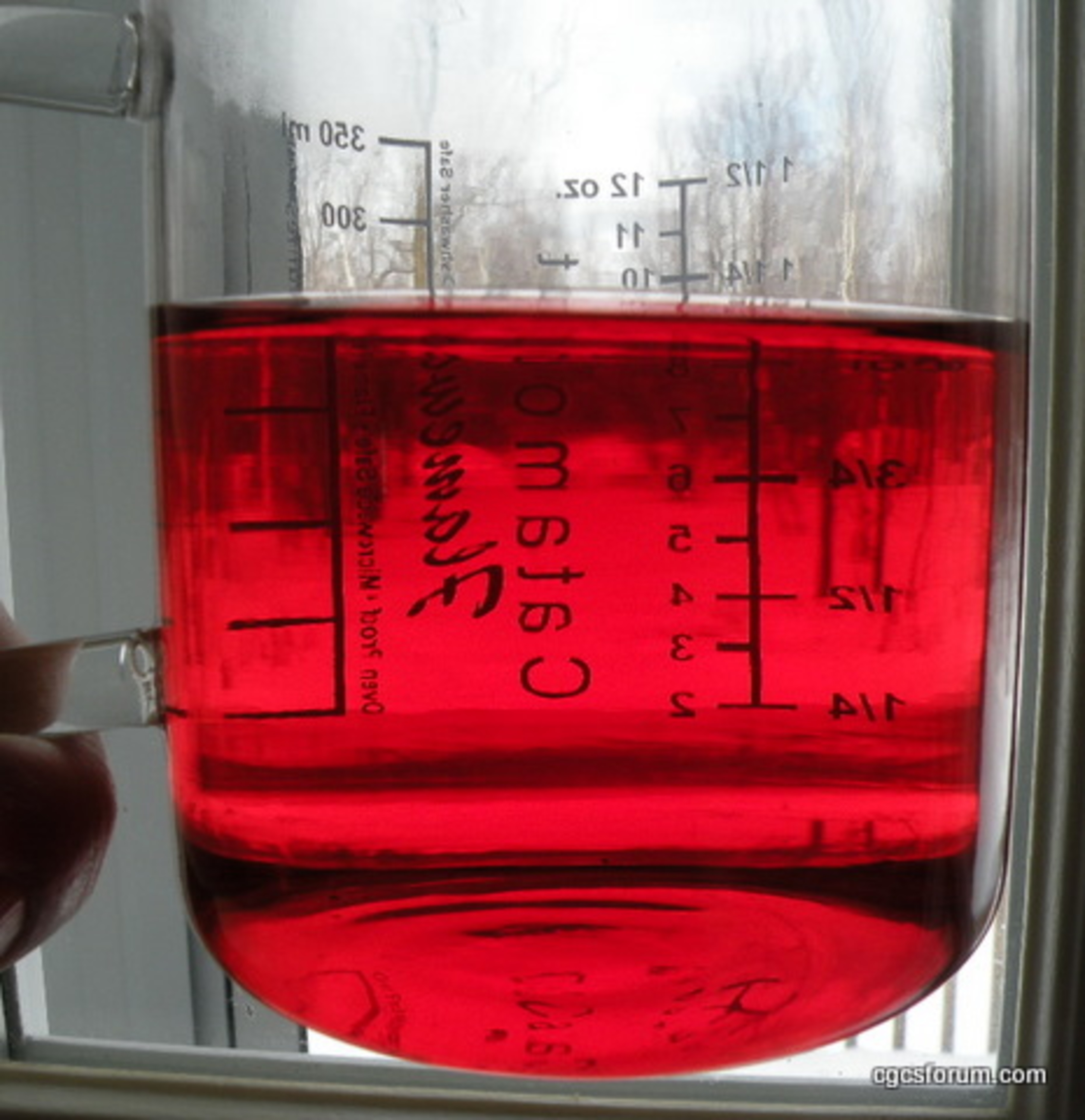Gold (Au) Colloids
Au Colloid Preparation:

20 mL of an aqueous 0.1 mM hydrogen tetrachloroaurate(III) hydrate solution was added to a 50 mL beaker. A magnetic stirring bar was added to the beaker, and the solution was heated on a hotplate (with magnetic stirring) until it starts to boil. Upon boiling, 2 mL of an aqueous 38.8 mM sodium citrate dihydrate solution was added to the boiling hydrogen tetrachloroaurate(III) hydrate solution. Boiling was allowed to continue for a further 10 minutes, after which, the resulting solution was removed from the heat, and allowed to cool to room temperature.
Upon the addition of the 2 mL of aqueous 38.8 sodium citrate dihydrate solution to the boiling 0.1 mM hydrogen tetrachloroaurate(III) hydrate solution, a deep red colour developed. This resulted from the citrate anions reducing the Au(III) cations to Au(0) nanoparticles, while most of the citrate is oxidised to citric acid. However, there is an excess of citrate anions in the solution. The excess (non-oxidised) citrate anions physisorb to the surface of the Au(0) nanoparticles, stabilising the Au(0) nanoparticles, forming a Au colloid.
QUESTION:
Considering that an aqueous solution of hydrogen tetrachloroaurate(III) hydrate is yellow/orange, and an aqueous solution of sodium citrate dihydrate is colourless, something has obviously happened to the resulting solution, for it to be turn a deep red colour. At a specific wavelength (frequency) of light, collective oscillation of electrons on the Au nanoparticle surface cause a phenomenon called surface plasmon resonance, resulting in strong extinction of light (absorption and scattering). The particular wavelength, or frequency, of light where this occurs is strongly dependent on what factors?
This section requires Javascript.
You are seeing this because something didn't load right. We suggest you, (a) try
refreshing the page, (b) enabling javascript if it is disabled on your browser and,
finally, (c)
loading the
non-javascript version of this page
. We're sorry about the hassle.
The influence of Au nanoparticle size on the surface plasmon resonance is illustrated in the figure below. Particles with sizes above 100 nm have broader UV-Vis peaks spanning into the 600 nm range, due to the presence of both transversal and longitudinal surface plasmon resonances. In comparison, gold nanoparticles with diameters below 2 nm do not exhibit surface plasmon resonance.
A major determinant of the optical properties of Au nanoparticles is their shape. By synthesizing Au nanoparticles of different shapes, the surface plasmon resonance can easily be tuned to give absorption maxima from around 500 nm into the near-infrared part of the spectrum. Irregular shaped particles such as Au nanorods, and urchin shaped Au nanoparticles (also called Au nanostars) have absorption maximum in the near-infrared region of the spectrum. See the figure below for an example, where (A) are spherical Au nanoparticles and (B) are urchin shaped Au nanoparticles.
The aggregation state of Au nanoparticles have an effect on their optical properties. This fact can be used to monitor Au nanoparticle stability, both over time, and upon addition of salt-containing buffers, which at high enough concentrations cause particle aggregation. See the figure below of an example, where the visual appearance and UV-Vis spectra of monodisperse (A) and sodium chloride (NaCl) induced agglomeration (B) of 15nm gold nanoparticles is shown.